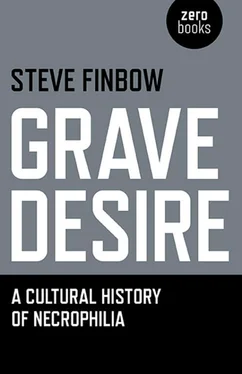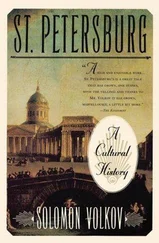In the early 1860s, the British prime minister Lord Palmerston and his ministers attempted to protect Queen Victoria from her perceived ‘necrophilia’. [96] E. D. Steele, Palmerston and Liberalism, 1855-1865 , (Cambridge, 1991), p. 225.
The object of this (mis)perception, the Albert Memorial—completed in 1872, ten years after the death of Victoria’s beloved Prince Consort—showed how the queen ‘pushe(d) to the limit the realization of something that might be called the pure and simple desire of death as such.’ [97] Jacques Lacan, The Seminars of Jacques Lacan: book VII, the ethics of psychoanalysis 1959-1960, ed. Jacques-Alain Miller, trans. Dennis Porter (New York, 1997), p. 282.
She incarnated that desire in the elaborate Gothic structure standing 54m tall. The statue of Albert seated beneath and within the tower, transforms the memorial into a Gothic spaceship, Albert as pilot, a steampunk version of Giger’s Alien space jockey, surrounded by the marbled metaphorical continents, blasting into the Victorian fundament, on its way to sexual congress with its mammarian / vulval partner the Royal Albert Hall, transmogrifying both into the copulatory Victoria and Albert Museum with its thrusting towers and supple domes. Albertopolis, Victoria’s monument to her lover, is an area/arena of death and desire, a hallucinated topology of lack, absence, and death. The Albert Memorial’s phallocentric thrust embodies Victoria’s symbolic necrophilia in which Albert’s dead body metamorphoses into a giant gilded statue, a form of ‘Venus statuaria,’ love for or intercourse with a statue as seen in the agalmatophilia of Krafft-Ebing’s ‘story of a young man (related by Lucianus and St. Clemens of Alexandria) who made use of a Venus of Praxiteles for the gratification of his lust; and the case of Clisyphus, who violated the statue of a goddess in the Temple of Samos, after having placed a piece of meat on a certain part. In modern times, the ‘Journal L’evenement’ of 4 thMarch, 1877, relates the story of a gardener who fell in love with a statue of the Venus of Milo, and was discovered attempting coitus with it.’ [98] Psychopathia Sexualis, p. 351.
An extreme form of Pygmalionism, Victoria’s symbolic necrophilia, her building of memorials, concert halls, and museums for her dead lover, enacts a ‘religious fetishism and phallus cult’ [99] Iwan Block, The Sexual Life of Our Time: Its Relations to Modern Civilization, Trans. M. Eden Paul (London, 1909), pp. 647-648.
of Albert.
In the twentieth and twenty-first centuries, this symbolic necrophilia manifests itself in Salvador Dali and Luis Bunuel’s L’age d’or, Jake and Dinos Chapman’s Death (two bronzed inflatable dolls on a LI-LO in the 69 position), and the articulated/de-articulated dolls of Hans Bellmer, Katan Amano, Ryoichi Yoshida, Marina Bychkova and, more recently Sarah Lucas’s Black and White Bunny and Pauline Bunny. The sex doll’s inanimate concupiscence actualizes a symbolic necrophilia, its gradation of life-like appearance and touch made terminal and morbid by their thanatoid presence, their living absence. As dolls and robots become more human, the ‘uncanny valley’ [100] See Masahiro Mori, The Buddha in the Robot: A Robot Engineer’s Thoughts on Science and Religion, trans. Charles S. Terry (Tokyo, 1981).
effect develops in which humans feel a revulsion to the robot/doll, like the corpse, the doll/robot is both nearly human and fully human and neither. Both the agalmatophile and the necrophile transgress this ‘uncanny valley’ and transform this revulsion into desire. In 2007, Erika LaBrie took part in a commitment ceremony with the Eiffel Tower and became Erica ‘Aya’ Eiffel (she has had previous ‘commitments’ to her archery bow and the Berlin Wall), in an objectum (object sexuality) variation of Victoria’s symbolic necrophilia with the Albert Memorial. These acts strip ‘sexuality of all functionality, whether biological or social; in an even more extreme fashion than “normal” sexuality, (they put) the body and the world of objects to uses that have nothing to do with any kind of “immanent” design or purpose.’ [101] Kaja Silverman, Male Subjectivity at the Margins (London, 1992), p. 187.
Achilles, Dimoetes, Herod, Greenlee, von Cosel, Bertrand and even Queen Victoria show that ‘[t]here is no form of human sexuality which does not marginalize need or substitute a fantasmatic object for the original and nutritive object.’ [102] Male Subjectivity at the Margins, p. 186.
Maybe the necrophile, symbolic or not, discovers that ‘the deepest chords of humanity are better struck through a dedicated artificiality than a simulation of humanness.’ [103] Allison de Fren, ‘The Exquisite Corpse: Disarticulations Of The Artificial Female,’ unpublished doctoral dissertation, USC, 2008, p. 8.
Sculptures of our dead ones, sarcophagi depicting the deceased, robots and dolls that present us with glimpses of our own mortality, are memento mori, objects projecting our future, prompts to remember that we too will die, that we will no longer be animate (animal). Does the sexual possession of a corpse disinhibit our own death drive? An incestuous and psychopathic tyrant, Periander of Corinth, (628–588 BCE)—one of the Seven Sages of Greece—accidentally killed his pregnant wife Melissa by throwing a footstool at her, he then defiled her corpse, burned alive his concubines, and sent his two sons away to become eunuchs. His obsession with his own death has all the makings of a Greek mystery or riddle. After his necrophiliac act, did his megalomania become so intense that his own death would be invisible, as if it had not or could not have happened, that there would be no memento mori to his own passing? To hide his place of burial, Periander ‘instructed two young men to meet a third man at a predetermined place and kill and bury him. Then he arranged for four men to pursue the first two and kill and bury them. Then he arranged for a larger group of men to hunt down the four. Having made all the preparations, he went out to meet the two young men, for he, Periander, was the third man.’ [104] The Book of Dead Philosophers, p. 7.
Periander attempted to escape death by anonymity, by refusing the architecture of desire, As Diogenes Laertius wrote,
Grieve not because thou hast not gained thine end,
But take with gladness all the gods may send;
Be warned by Periander’s fate, who died
Of grief that one desire should be denied. [105] Diogenes Laertius, Lives of Eminent Philosophers, Volume 1, trans. Robert Drew Hicks (Cambridge, 1972), p. 101.
Moving into the present and the future, necrophilia has similarities to cybersex and online sex webcams. ‘The attraction of cybersex is that, since we are dealing only with virtual partners, there is no harassment. This aspect of cyberspace—the idea of a space in which, because we are not directly interacting with real people, nobody is harassed and we are free to let go our most extreme fantasies—found its ultimate expression in a proposal which recently resurfaced in some circles in the US, a proposal to “rethink” the rights of necrophiles (those who desire to have sex with dead bodies). Why should they be deprived of it? The idea was formulated that, in the same way people sign permission for their organs to be use for medical purposes in the case of their sudden death, one should also allow them to sign permission for their bodies to be given to necrophiliacs.’ [106] Slavoj Žižek, How to Read Lacan, (London, 2006), pp. 100-101.
The British author/artist Stewart Home pre-empted this concept in his ‘necrocards’. Similar to organ-donor cards, they carried the message: ‘I support sexual liberation’ and ‘I want to help others experiment sexually after my death’. On the reverse of the card are tick boxes indicating the sexual preferences after death—‘I request that after my death A. my body be used for any type of sexual activity or B. gay only. straight only. I do not wish to be dismembered or disfigured during necrophiliac sex. (tick as appropriate).’ [107] Stewart Home, ‘The Necrocard: Anyone For Sex After Death?’ http://www.stewarthomesociety.org/neoism/necro.htm
Читать дальше












